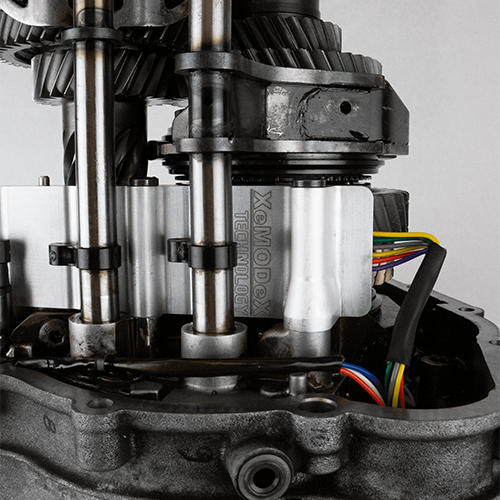Application
Application
For Porsche equipped with 7DT45 and 7DT70 PDK Transmission.
| 2009-on | Porsche | 911 |
| 2009-on | Porsche | Cayman |
| 2009-on | Porsche | Boxster |
| 2009-on | Porsche | Boxster 997 |
| 2009-on | Porsche | Boxster 991 |
| 2009-on | Porsche | Boxster 987 |
| 2009-on | Porsche | Boxster 981 |
Product Description
Product Description
Our PDK Fork Position Sensor is utilizing the latest components and technologies available in today’s automotive electronics applications. We have focused on quality and temperature ratings for every component used in the sensor’s design. As a result, our sensor exceeds AEC-Q200 Automotive Standard for “Grade 0” requirements by 20°C (68°F), and it’s rated to operate at sustained temperatures of 170°C or 338°F.
This product is fully designed, developed, and manufactured by our company located in Ontario, Canada. We are confident that the sensor will stand the test of time and we guarantee it with our Limited Lifetime Warranty.
Click here for full product details.
PDK Sensor comes with OEM wiring and connector already attached, however the RPM sensor will need to be cut-off from the original PDK sensor and soldered to our unit.
Additionally, once the PDK Sensor is installed back in the vehicle, it must be calibrated using a specialized scanner.
Click here to download replacement instructions.
Detailed Failure Information
Detailed Failure Information
The Fork Position Sensor failure is a common occurrence in Porches 997, 991, 987 and 981 models, equipped with PDK Transmission. Replacement sensors are not available through Porsche or it’s transmission supplier ZF. Only a complete PDK transmission is available through Porsche dealers, and it costs about $25,000 dollars.
The most common reason for the sensor’s premature failure is heat. Magnetic Hall-Effect sensors designed some 20 years ago simply can’t withstand high oil temperatures. To address this issue, ZF added the external oil cooler system. This new cooler went into production in all 2013 and newer models. However, the design in 2009-2012 PDK transmissions remained unchanged, and no oil cooling improvements where made.
Pictured below is the X-Ray of the original Fork Position Sensor still used in current PDK Transmission production. This complex design utilizes Hall-Effect PWM Sensors and sensing coils

Pictured below is XeMODeX’s lean PDK Sensor design. Modern Hall-Effect sensors magnet sensing field is fully programable, eliminating the need for magnetic-field sensing coils. In addition, each of the PWM sensors now comes in a 3-pins package instead of 20-pins. The circuit is much simpler and far more reliable.

Common Failure Symptoms
Common Failure Symptoms
•“Gearbox Fault” message is displayed
•Transmission is in “Limp Home” mode
One or more of the following codes is stored:
1731- “Shift Rod 1 Displacement Sensor”
1732- “Shift Rod 2 Displacement Sensor”
1733- “Shift Rod 3 Displacement Sensor”
1734- “Shift Rod 4 Displacement Sensor”
Reference Numbers
Reference Numbers
0501325775 | 0501324703 | 0501327105 | 146832 | 9G1 300 021 JX | 9G2 300 021 2X | 9G1300021JX | 9G23000212X
What you need to know (please read before ordering)
What you need to know (please read before ordering)
The order will be processed during our regular business hours (Mon-Fri 8:30 – 5:00 EST). If the order is submitted after 4:30 PM EST it will be processed and shipped next business day.
Features:
Lifetime Limited Warranty: This module comes with lifetime limited warranty. Please see here for more information.
How This Service Works
How This Service Works
Step 1: Purchase the sensor online or over the phone.
Step 2: We will send you the sensor the same day of processing your order.
Step 3: You install the sensor into your vehicle.
Step 4: You calibrate the sensor to the vehicle.
For more detailed instructions, please see here.




















